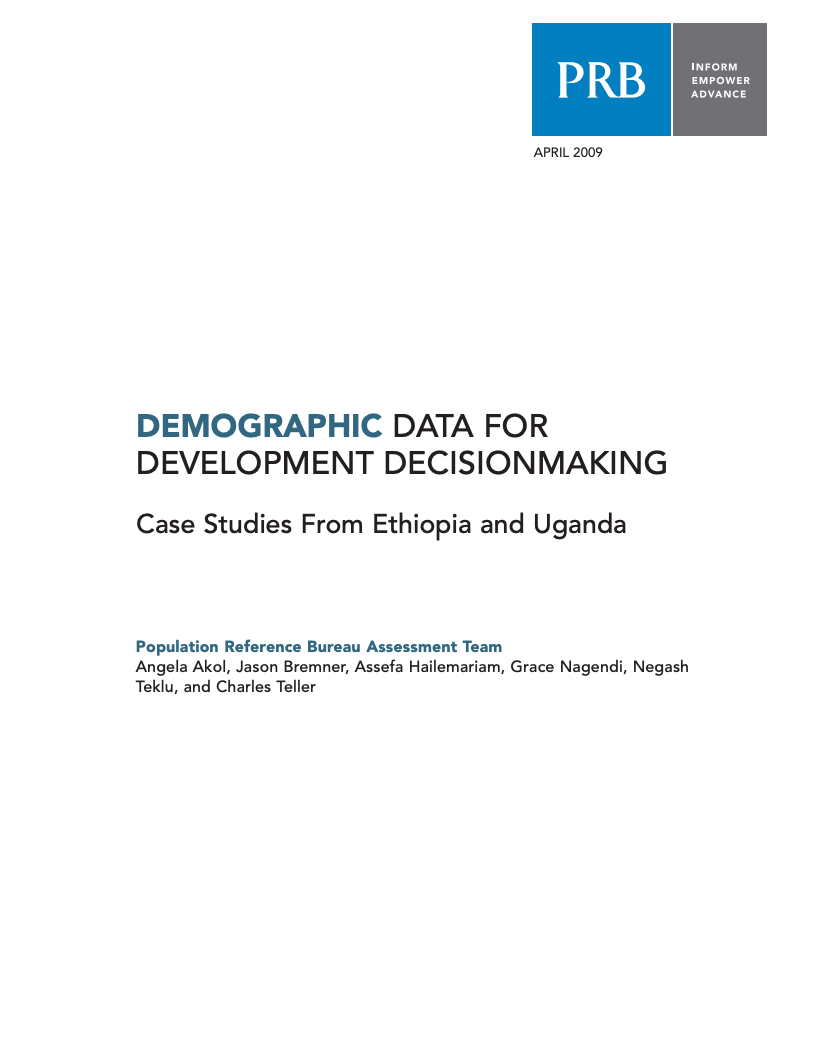
Demographic Data for Development Decisionmaking
Date
June 17, 2009
Author
Focus Area
(June 2009) Development is about improving the lives of people, and policy and fiscal decisions should rely on data that answer who these people are, where and how they live, and how their lives are changing. The demographic and related data that answer these questions are essential to policymakers and development planners across nearly every sector of society. Unfortunately, barriers to access and use of such data exist throughout the developing world and particularly in sub-Saharan Africa. The lack of high-quality data and access to existing data are fundamental challenges to effective development planning and evaluation of development interventions.
The William and Flora Hewlett Foundation embarked on an exploratory planning process in response to these challenges and specifically examined the following issues in sub-Saharan Africa:
- A lack of basic demographic and socioeconomic data.
- Serious problems with access to and use of these data even when they do exist.
- Insufficient demand for the application of these data by policymakers and other key stakeholders who determine development directions and allocate resources.
Objectives
In September 2008, the Hewlett Foundation requested that the Population Reference Bureau (PRB) contribute to this planning initiative through an assessment of what data policymakers and journalists do use, should use, and how to increase demand for such data in policymaking and reporting. In response, PRB embarked on case studies in Ethiopia and Uganda with the following objectives:
- Improve understanding of the ways that policymakers at the national and subnational levels as well as journalists access and use specific types of demographic and socioeconomic data including the national census, household surveys, service statistics, and budget data.
- Identify ways that the Hewlett Foundation and other development partners could contribute to existing efforts to increase access, demand, and use for these types of data.
Methods
To achieve the objectives, PRB worked with local partners and conducted the following activities:
- A targeting exercise to identify key informants for interviews. A list of high-level policymakers was developed and then the list was sent to a high-level adviser for review.
- Developed a semi-structured interview instrument.
- Completed 45 semi-structured interviews of diverse policymakers in Ethiopia and Uganda (25 in Ethiopia and 20 in Uganda).
- Completed 23 interviews of journalists from different media in Ethiopia and Uganda (13 in Uganda and 10 in Ethiopia).
- Analyzed interviews to identify common themes and highly pertinent input.
- Coordinated a meeting of Ethiopia and Uganda teams for comparison of findings.
- Developed recommendations related to demand, access, and use of data.
The Ethiopia and Uganda assessment teams focused on interviewing high-level government decisionmakers, key population data advisers and influentials, and the media. The work was carried out to complement a recently completed assessment by the Population Council in Ethiopia and Uganda for the same Hewlett Foundation initiative. The list of participants was compared with Population Council’s and any duplication was eliminated.
Interviews were conducted with a semi-structured interview guide. The interview guide sought responses about the following: main roles and functions of the interviewee; data use by the interviewee; priority data needs; views on quality of demographic data; training and capacity-building needs; need for media to report on demographic data; and overall impressions of data demand, access, and use. Verbal consent was obtained prior to the interview and notes regarding responses were recorded on paper. In Uganda, where possible, the interviews were recorded with the consent of the interviewee.
Fieldwork was carried out at federal and regional levels, between Nov. 17, 2007, and Jan. 6, 2008. The assessment teams from Ethiopia and Uganda met in Kampala, Uganda, on Jan. 31 and Feb. 1, 2008, to share experiences and insights regarding the assessment process; explore the similarities and differences in results; identify common challenges to decisionmaker and media use of demographic data; and explore opportunities to overcome these challenges.

 ">
">